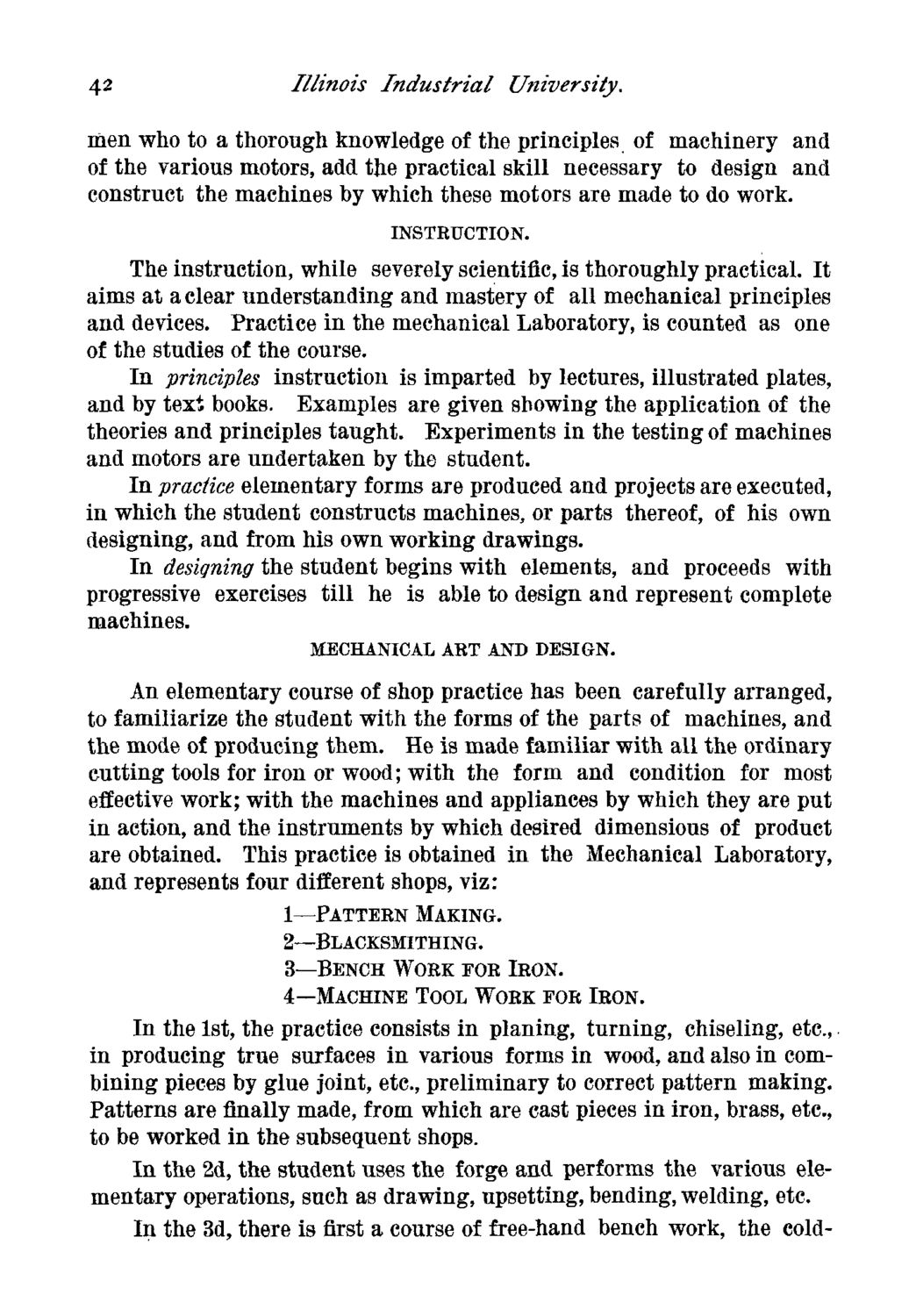| |
| |
Caption: Course Catalog - 1882-1883
This is a reduced-resolution page image for fast online browsing.

EXTRACTED TEXT FROM PAGE:
42 Illinois Industrial University. men who to a thorough knowledge of the principles of machinery and of the various motors, add the practical skill necessary to design and construct the machines by which these motors are made to do work. INSTRUCTION. The instruction, while severely scientific, is thoroughly practical. It aims at a clear understanding and mastery of all mechanical principles and devices. Practice in the mechanical Laboratory, is counted as one of the studies of the course. In principles instruction is imparted by lectures, illustrated plates, and by text books. Examples are given showing the application of the theories and principles taught. Experiments in the testing of machines and motors are undertaken by the student. In practice elementary forms are produced and projects are executed, in which the student constructs machines, or parts thereof, of his own designing, and from his own working drawings. In designing the student begins with elements, and proceeds with progressive exercises till he is able to design and represent complete machines. MECHANICAL ART AND DESIGN. An elementary course of shop practice has been carefully arranged, to familiarize the student with the forms of the parts of machines, and the mode of producing them. He is made familiar with all the ordinary cutting tools for iron or wood; with the form and condition for most effective work; with the machines and appliances by which they are put in action, and the instruments by which desired dimensious of product are obtained. This practice is obtained in the Mechanical Laboratory, and represents four different shops, viz: 1—PATTERN MAKING. 2—BLACKSMITHING. 3—BENCH WORK FOR IRON. 4—MACHINE TOOL WORK FOR IRON. In the 1st, the practice consists in planing, turning, chiseling, etc., in producing true surfaces in various forms in wood, and also in combining pieces by glue joint, etc., preliminary to correct pattern making. Patterns are finally made, from which are cast pieces in iron, brass, etc., to be worked in the subsequent shops. In the 2d, the student uses the forge and performs the various elementary operations, such as drawing, upsetting, bending, welding, etc. In the 3d, there is first a course of free-hand bench work, the cold-
| |